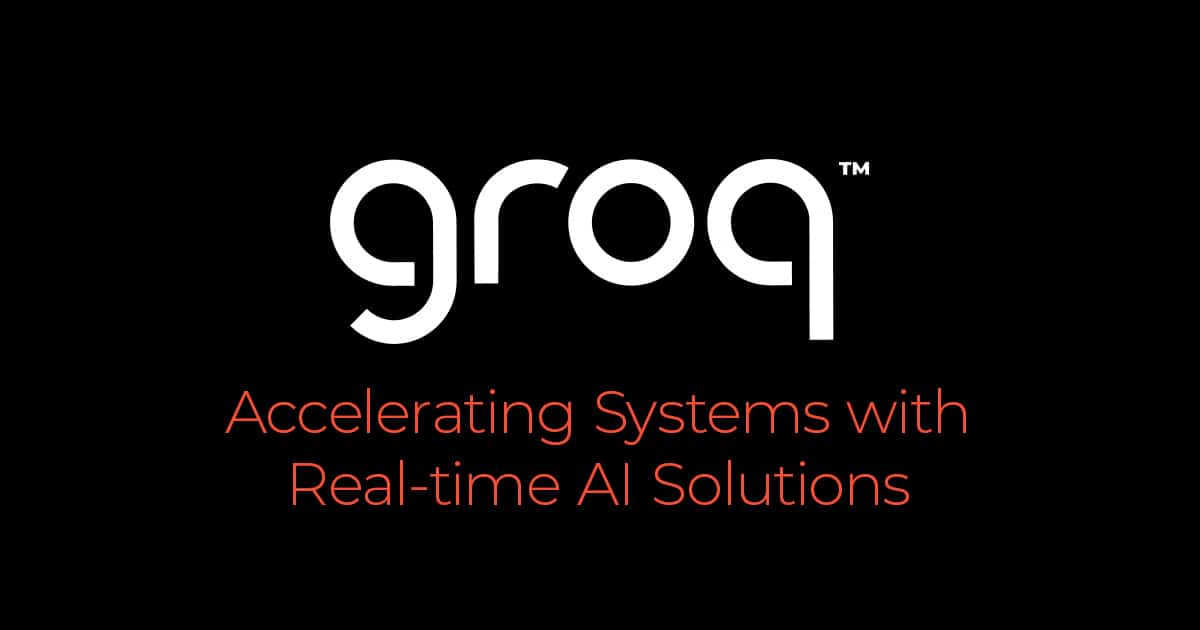- Artificial Antics
- Posts
- AI Bytes Newsletter Issue #64
AI Bytes Newsletter Issue #64
🖼️ ChatGPT images reimagined | ⚡ Groq speeds ahead | 📞 Telecom gets smart | 💘 AI flirting games | 🤖 Smarter robots | 🚨 Meta AI shakeup | 🎧 Vibe coding tips | 🛡️ Safer AI coding | 🎤 MiTechCon moments

Welcome to AI Bytes Newsletter Issue #64
This week, we’re highlighting the latest in AI, including OpenAI's new image-generation capabilities and Groq's impressive leap forward in AI inference speed and cost-efficiency. Plus, we've rounded up essential reads to keep you ahead on AI's evolving impact. Let's dive in!
The Latest in AI
A Look into the Heart of AI
Featured Innovation
OpenAI’s Image Generation is Now Built In to the Foundational Models
I’ve been using ChatGPT to create images for a while, but until now, it was really just borrowing DALL-E to do all of the image generation work. Recently OpenAI changed this so that image generation is built right into the model. This may seem like a small change, but it’s foundationally different!
GPT-4o introduces a transformative leap in image generation, seamlessly integrating visuals into the natural flow of conversation. This latest model from OpenAI isn't just about creating beautiful images—it's about crafting visuals that communicate precisely, accurately, and with photorealistic clarity.
Unlike traditional models that excel mainly in artistic, abstract visuals, GPT-4o specializes in generating highly functional and practical images. Whether you're designing detailed infographics, precise diagrams, compelling menus, or visually engaging educational materials, GPT-4o delivers consistent, context-aware, and nuanced images with remarkable attention to detail.

Leveraging its inherent multimodal capabilities, GPT-4o accurately renders text within images, maintains visual consistency across multi-turn interactions, and effectively integrates uploaded visuals as inspiration or reference. This makes GPT-4o an invaluable tool for creators, educators, marketers, and businesses seeking precise and effective visual communication.
Though impressive, the model does have limitations—such as occasional cropping inaccuracies, challenges with dense information, and multilingual text rendering issues—which OpenAI continues to refine actively.
Available now across various ChatGPT plans, GPT-4o elevates visual communication to a powerful new standard, unlocking practical and precise image generation directly within conversational AI.
See the full article below:
Tool of the Week: Groq and groq.cloud
So, this week’s highlight isn’t exactly brand-new to me, but it’s quickly becoming one of my favorite tools: Groq. No, not Elon Musk’s Grok—I’m talking about the ultra-fast hardware and inference chips built by Chamath Palihapitiya, one of the All-In Podcast founders.
I’ve been blown away by Grok, and here’s why: first, the cost efficiency is unreal. Take transcription, for example—I usually transcribe audio files with Deepgram, and their cheapest batch rate was around 11 cents per hour. Grok? It’s just 2 cents per hour if you’re using Whisper Large (from Hugging Face), and 4 cents if you go with Whisper Large V3 Turbo from OpenAI. Yeah, you read that right—it’s insanely affordable.
But here’s the kicker: speed. I ran some tests with calls of varying lengths. A 15-minute call transcribed through Whisper V3 Large Turbo on Hugging Face took about 70 seconds. With Grok, it clocked in around 6 or 7 seconds. Huge difference, right?
Faster results, lower costs—Grok checks all the boxes for me, making it an easy pick for my Tool of the Week.
Have you tried out Groq yet? what’s your take? Let me know [email protected]
Must-Read Articles
Mike's Musings
AI Insights
Beyond the Vibe, How and When to Vibe Code and how to Do it Effectively
I’ve vibe coded quite a bit myself and genuinely enjoy the boost in productivity, AND with years of software development experience, I’ve learned the necessity of deeply scrutinizing everything these tools produce. Did I actually get exactly what I requested? Did it mistakenly give me a Flask app when I asked explicitly for Django (or vice versa)? Did the latest iteration unintentionally remove functionality that was previously working? What’s the detailed diff look like? Every step requires careful inspection, thoughtful guidance, or occasionally a rollback.
In today’s environment of extremely rapid code generation, practicing meticulous version control is absolutely essential. Everything from the codebase and prototypes down to databases must be rollback friendly at any given moment.
While I genuinely appreciate the acceleration these tools bring, I’m increasingly noticing a concerning lack of attention to detail and a gap in hands on experience among some projects embracing this “vibe coding” trend. Just recently, I reviewed some examples replit shared to showcase vibe coded projects and immediately noticed broken links in their featured demo.
If we want to push forward with this fast-paced development method, it's crucial to slow down just enough to thoroughly vet the examples we're showcasing, especially from those advocating strongly for vibe coding.
Tips for Using Vibe Coding Responsibly
If you integrate AI into your development workflow through vibe coding, here are key practices to ensure responsible use:
1. Start Small and Low-Stakes
Use vibe coding on small, low-risk projects or prototypes. AI-generated prototypes should be viewed as drafts needing refinement. Begin with internal tools or experimental scripts, and build confidence before integrating into critical systems.
2. Always Review and Test the Code
Never blindly accept AI-generated suggestions. Carefully review the AI’s output for logic, clarity, and potential bugs. Thoroughly test and verify edge cases. Treat AI-generated code as if it were written by a junior developer—always verify and clarify when unsure.
3. Use Version Control and Keep History
Commit AI-generated code frequently and incrementally in version control systems like Git. This approach safeguards your project against accidental AI missteps, making it easier to revert or trace issues introduced by AI. Regular commits ensure clear visibility of code evolution.
4. Maintain Conventional Development Practices
Stick to sound engineering practices—architecture planning, modular code, unit testing, code reviews, and thorough documentation. Even with AI-generated code, impose structure and discipline. Prompt AI tools to assist in maintaining these standards, not bypassing them.
5. Double-Check for Security and Best Practices
Always audit AI-generated code for security risks and adherence to best practices. Use static analysis tools, linters, or even a secondary AI prompt to check for vulnerabilities, secure coding standards, and proper dependency management. Explicitly validate non-functional requirements, as AI may overlook them.
6. Know When to Stop or Switch Gears
If the AI consistently provides problematic suggestions, step back and reassess. Sometimes manually writing or correcting complex logic can be faster and more reliable. Maintain a balanced workflow—AI-generated code can form the bulk of your project, but crucial details should remain in your direct control.
5 Best Practices for AI-Assisted Coding (Without Pure “Vibes”)
For teams and junior developers wanting the benefits of AI without overly relying on vibe coding, consider these practices:
1. Start with a Clear Plan and Basic Design
Always outline your project first—modules, interactions, data structures. Clear, structured requirements guide both you and the AI, reducing ambiguous or problematic outcomes. AI excels at implementation but relies on you for architectural clarity.
2. Use AI as an Assistant, Not Autopilot
View AI tools as coding partners rather than full automation solutions. Critically evaluate their suggestions, integrating AI-generated boilerplate while personally handling critical logic. Actively reviewing AI outputs helps maintain your coding skills and understanding.
3. Incorporate Testing and Verification
Integrate rigorous testing and verification processes immediately after AI-generated outputs. Write or prompt unit tests, conduct thorough co
de reviews, and ensure AI-produced code meets your defined quality standards. Regular testing prevents compounded errors.
4. Commit Early, Commit Often (Version Control)
Implement disciplined version control, committing frequently with descriptive messages. AI-generated changes should be clearly documented, allowing for easy rollbacks or debugging. Feature branches and regular merges after review help maintain clean and manageable codebases.
5. Continue Learning and Enforcing Best Practices
Use AI-assisted coding as an opportunity to deepen your coding knowledge. Regularly study and refine AI-generated code to align with best practices and coding standards. Constant learning and critical engagement ensure your skills stay sharp and your code remains high-quality.
Following these guidelines lets you leverage AI efficiently, maintaining productivity gains while safeguarding the quality and integrity of your projects.
Here are a couple of good articles on what Vibe Coding is and how to do it right, check these out:
- https://natesnewsletter.substack.com/p/the-vibe-coding-bible-how-to-build?triedRedirect=true
- https://jtouley.substack.com/p/mastering-strategic-speed-codinghtml
There is also a DeepLearningAI short course on Vibe coding here: https://www.deeplearning.ai/short-courses/vibe-coding-101-with-replit/
This is a touchy subject, what are your thoughts, hit me up at [email protected].
Mike's Favorite
[Video] MiTechCon Conference Insights
This was a small but powerful conference, many good talks and smart people. I made a lot of new connections and learned quite a bit in the sessions and side conversations.
This first day brought some standout sessions, including practical insights into agentic workflows, deep dives into open-source LLMs, and AI-enhanced software development strategies. One unexpected gem was a session about tackling technical debt through storytelling—a creative approach that combined practical workshops with actionable frameworks. Another highlight was learning from a seasoned expert sharing key lessons from over a decade in ML, emphasizing a business-driven approach to model building, training, and refinement. I also particularly enjoyed the 2nd day keynote by Damian Synadinos, “Trust, but Verify-explAIned”, I’ll do an article soon on the importance of this in conversations and how vCons and SCITT tackle this challenge.
What kind of wins and learnings are you having with AI this week? Let me know: [email protected].
Latest Podcast Episode of Artificial Antics
Connect & Share
Have a unique AI story or innovation? Share with us on X.com or LinkedIn.
Collaborate with us: Mike [email protected] or Rico [email protected].
Stay Updated
Subscribe on YouTube for more AI Bytes.
Follow on LinkedIn for insights.
Catch every podcast episode on streaming platforms.
Utilize the same tools the guys use on the podcast with ElevenLabs & HeyGen
Have a friend, co-worker, or AI enthusiast you think would benefit from reading our newsletter? Refer a friend through our new referral link below!
Thank You!
Thanks to our listeners and followers! Continue to explore AI with us. More at Artificial Antics (antics.tv).
Quote of the week: "Most things will start working again if you just unplug them for a bit and plug them back in, even you" - Unknown







